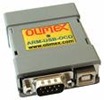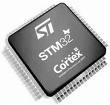Simple ADC use on the STM32
Here is a bit of a look at how to use the ADC on the STM32 for simple applications. The ADC peripheral on the STM32 processor is a flexible but complex beast. The peripheral driver library should make it relatively easy to use. After all, there is no need to remember the names of all those pesky registers and bitfields. There are anything up to 18 multiplexed channels that can be converted singly, continually, scanned or discontinuously. The results can be transferred to memory through DMA and some devices have two or more ADCs for simultaneous conversions. With all those options, simple reading of an ADC port is a little tricky…

 While I have a couple of STM32 development boards already, I was looking around for something a bit more flexible. Somehow, development kits always seem to have the wrong set of peripherals and pins I want to play with are not available. After a bit of hunting, I came across this board, made by ETT. It comes in a convenient, small size with two single rows of pins for the IO. Perfect for plugging into a breadboards for some proper playing…
While I have a couple of STM32 development boards already, I was looking around for something a bit more flexible. Somehow, development kits always seem to have the wrong set of peripherals and pins I want to play with are not available. After a bit of hunting, I came across this board, made by ETT. It comes in a convenient, small size with two single rows of pins for the IO. Perfect for plugging into a breadboards for some proper playing…

